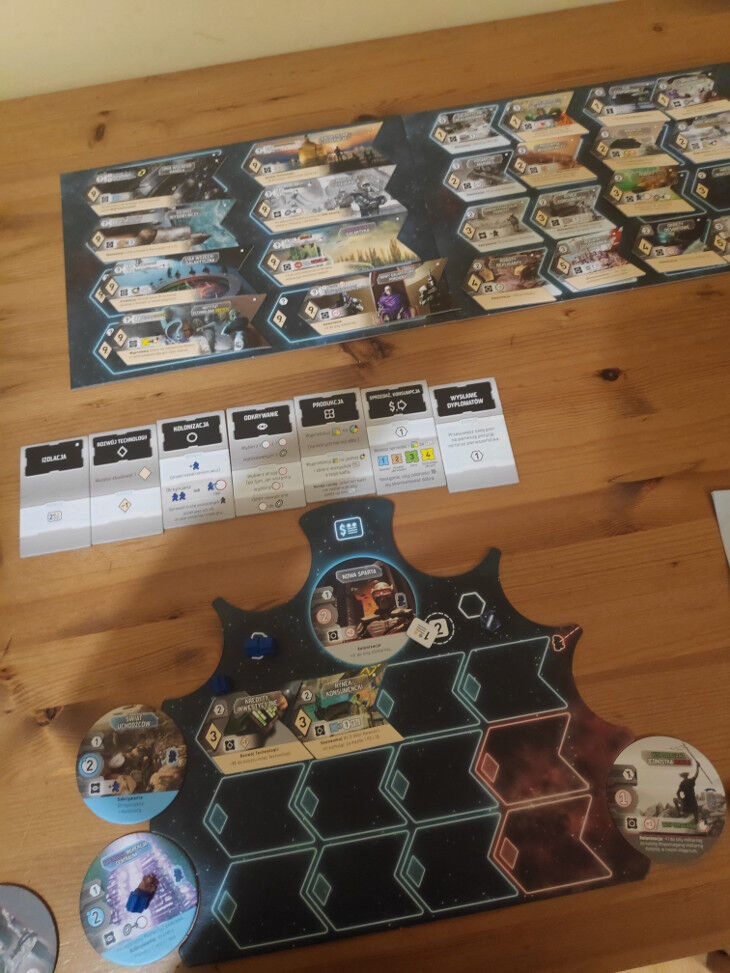In the perspective of the galaxy
Tom Lehmann has many games to his credit. What is really recognizable, however, is behind the basis of one series, which takes place in a galaxy far, far away. In the beginning there was Race . Undoubtedly, the famous card game, well known to Polish board players. Some people love it, others call it solitaire, but it cannot be denied that it is an eminently cult game (51st place on the BGG list). Unfortunately, I did not play Race , although I do not rule out that I will be tempted by it with the expected reprint of the Portal publishing house. Then there was Roll. A fast and dynamic dice game in the same universe and with a very similar graphic concept. I played it myself for a long time and passionately, so when I found out about another game in the same world, I knew that sooner or later it would come to me. However, since great responsibility is associated with great power, at the same time a high credit of trust was followed by even higher expectations towards her.

Box?
For the first time, the game impressed me when I picked it up from the parcel locker. It was huge, heavy, and I couldn’t wait to open it. After unpacking, a few bags are thrown into the eyes, and under the quasi-molding straight from FFG there is a whole lot of moldings with components. All of them have been made with care – the tesseract-shaped cubes that symbolize the goods produced on the planets make the greatest impression. The only thing that my Kickstarter warped brain can stick to is the lack of a decent molding for components. However, I can understand this, knowing that it would have the effect of increasing the price of the product.
Share!
Each player has his own starting colony, on which he places additional planets and technology tiles. The game consists of rounds, in each of them individual players choose one action tile, deciding what will be performed in a given round. Usually everyone will participate, but the selecting player will receive a bonus. In the basic variant of the game, you can choose from:
– isolation – obtaining 2 credits,
– technology development – purchase of a technology tile,
– discovering – choosing planet tiles from the bag,
– colonization – selecting colonizer mepli or colonizing the planet (an appropriate amount of these mepli and credits or military strength are required),
– production – production of goods on colonized planets,
– sales and consumption – obtaining credits and victory points, usually in exchange for goods,
– sending diplomats – that is moving your order piece to the beginning.

In the advanced game, isolation actions are replaced by an overview of galactic objectives, adding extra depth to the gameplay with a new way to score points.
The game can end up in 4 different ways:
– one player’s technologies will occupy more than 10 fields on his board,
– one of the players will gain more than 7 colonies,
– the number of available colonists will drop below five
– the Victory Point tokens run out.
The bright side of the force
The game is highly replayable: there are a lot of planet tiles, as well as technology, and building combos is quite satisfying. Due to the fact that most of the actions can be performed simultaneously, the game has a low downtime and should not have major problems with scalability. I also like that the actions are performed by all players, which reminds me of For the Glory of Rome . Mechanically, the game works flawlessly, I didn’t notice any major problems with the balance.

Darth Galaxer
Perhaps it is because of my high expectations or the strength of the brand, but I am missing something here. It seems to me that some potential could be hidden, for example, in expanding the mechanics of placing technologies on your board. Additional bonus rules could enrich the gameplay a bit tactically.

